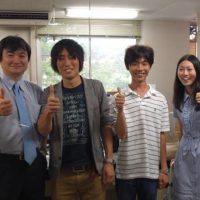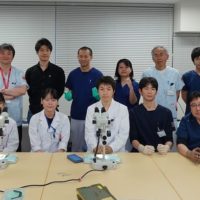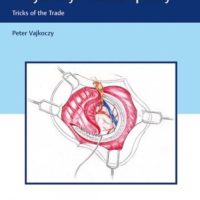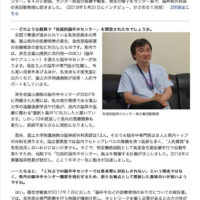ハンガー反射の不思議〜痙性斜頸・頚部ジストニア治療への応用
痙性斜頸(spasmodic torticollis)とは首が左右上下のいずれかに傾く、捻じれる、震えるといった不随意運動を引き起こす局所性ジストニアの一種で、頸部ジストニア(cervical dystonia)とも呼ばれています。胸鎖乳突筋、僧帽筋、板状筋などの異常緊張により本人の意思とは関係なく首が不自然な姿勢となり、筋肉に痛み、痺れや振戦を伴う場合が多い疾患です(Wikipediaより引用改変)。
一方、頭に針金のハンガーをかぶせると頭部が勝手に回ってしまう「ハンガー反射」という大変興味深い現象があります。われわれは、この現象を痙性斜頚の治療へ応用する研究を行なっていますが、今回、健常人120名を対象に、このハンガー反射がどのくらいの確率で発生するのかを検討した結果、ハンガー反射は115名(95.8%)で出現することが判明しました。この手法が今後の痙性斜頸・頚部ジストニアの治療に役立つことを願っています。
Asahi T, Sato M, Kajimoto H, Koh M, Kashiwazaki D, Kuroda S.
Rate of Hanger Reflex Occurrence: Unexpected Head Rotation on Fronto-temporal Head Compression.
Neurol Med Chir (Tokyo). 2015 Jul 15;55(7):587-91
http://www.ncbi.nlm.nih.gov/pubmed/26119894
A Voyage to Depth of Neuroscience Vol. 21
Rate of Hanger Reflex Occurrence: Unexpected Head Rotation on Fronto-temporal Head Compression.
When the head is encircled with a wire clothes hanger and the unilateral fronto-temporal region is com- pressed, the head rotates unexpectedly. As the mechanism is unclear, however, we have temporarily named this phenomenon as the “hanger reflex.” We previously reported a case wherein this phenomenon was applied to treat cervical dystonia. Because little is known about this phenomenon, we determined how often this phenomenon is observed in healthy subjects. Study participants were 120 healthy Japanese adults (60 men and 60 women) aged 19–65 years. A wire clothes hanger was applied to each subject’s head. The longer side of the hanger was attached over the volunteer’s fronto-temporal regions on both sides of the head in succession (i.e., two applications per volunteer). We evaluated whether the subjects felt the sensation of head rotation by using a questionnaire. The sensation of head rotation was observed in 95.8% of subjects. There were five non-responders (4.2%). In 85.4% of the trials, head rotation was observed in the direction that coincided with the side compressed by the hanger. There were no differ- ences in responses between genders. The incident rate of the hanger reflex was remarkably high and most likely represents a prevalent phenomenon in humans. The mechanism underlying the reflex remains unknown. Further research should be performed to elucidate the underlying causes of the hanger reflex, which represents a potential treatment for cervical dystonia.










